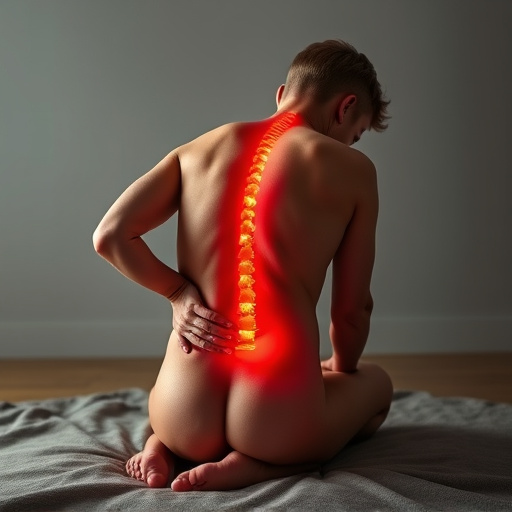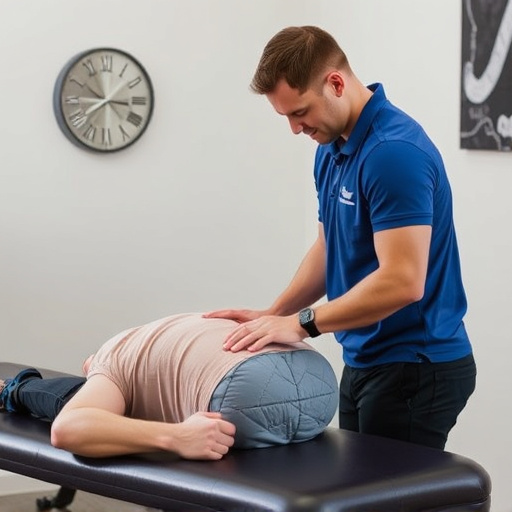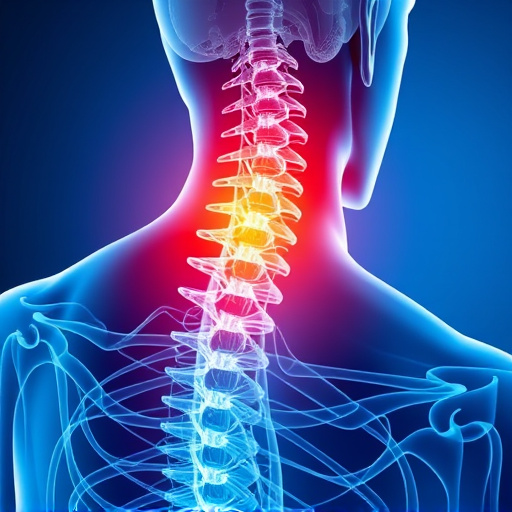Ergonomic injuries caused by poor work environments or incorrect postures lead to musculoskeletal disorders like neck pain, back aches, and carpal tunnel syndrome, impacting quality of life and increasing healthcare costs. Effective treatment involves rest, therapy, medication, and tailored exercises focusing on chronic pain relief and prevention. Incorporating simple exercises into daily routines strengthens muscles, improves flexibility, enhances posture, and speeds up recovery when combined with specialized treatments like personalized plans and spinal adjustments. Regular exercise, including yoga, Pilates, stretching, and targeted strength training, plays a vital role in lower back pain relief, chronic pain management, and preventing further injuries. Consistency, gradual progression, and listening to bodily needs are key to successful ergonomic injury treatment.
Ergonomics-related injuries are prevalent in today’s workplace, leading many to seek effective treatment options. This article explores simple exercises that can complement ergonomic injury treatment, focusing on recovery and prevention. By understanding the impact of ergonomic injuries and incorporating targeted routines, individuals can enhance their overall well-being. We delve into strategies to build strength and flexibility, offering practical insights for a holistic approach to ergonomic injury treatment.
- Understanding Ergonomic Injury and Its Impact
- Incorporating Simple Exercises for Effective Recovery
- Building Strength and Flexibility Through Targeted Routines
Understanding Ergonomic Injury and Its Impact
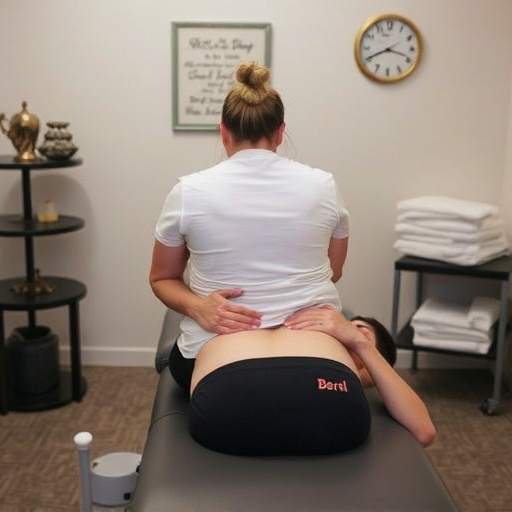
Ergonomic injury refers to musculoskeletal disorders resulting from prolonged exposure to poor work environments or incorrect posture while performing repetitive tasks. These injuries can manifest as neck pain, back aches, carpal tunnel syndrome, and other chronic conditions that impact daily life and productivity. The effects of ergonomic injuries extend beyond physical discomfort; they can lead to decreased quality of life, reduced work performance, and increased healthcare costs.
Proper ergonomic injury treatment involves a multi-faceted approach, including rest, ice or heat therapy, medication for pain relief, and therapeutic exercises tailored to the specific affected area, such as neck or back. While chronic pain relief is essential, focusing on preventive measures and incorporating ergonomic principles into daily routines can significantly reduce the risk of future injuries. Therapeutic exercises play a crucial role in strengthening muscles, improving flexibility, and enhancing overall body posture, thereby contributing to effective neck pain treatment and promoting long-term wellness.
Incorporating Simple Exercises for Effective Recovery
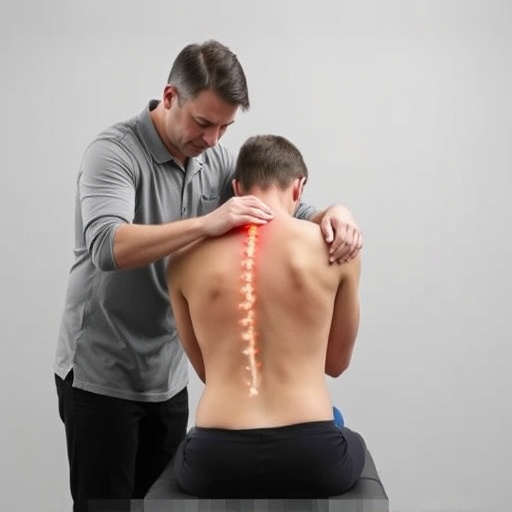
Incorporating simple exercises into your routine is a powerful tool for effective ergonomic injury treatment and recovery. These exercises are designed to strengthen muscles, improve flexibility, and enhance overall body posture, which are key factors in preventing and managing ergonomic-related ailments. Unlike complex routines that may cause further strain, these simple movements are gentle yet incredibly beneficial, allowing individuals to take an active role in their healing process.
When combined with specialized treatments like personalized treatment plans and targeted spinal adjustments, exercises can accelerate progress in herniated disc treatment and other ergonomic injuries. By targeting specific areas of concern, professionals can guide patients through safe and effective exercises tailored to their needs. This multi-faceted approach ensures a comprehensive recovery journey, promoting long-term health and well-being.
Building Strength and Flexibility Through Targeted Routines
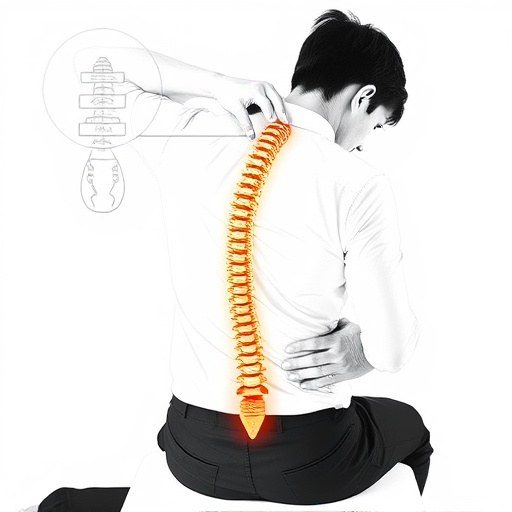
Engaging in regular exercise is a crucial component of ergonomic injury treatment, especially for those struggling with lower back pain or seeking chronic pain relief. By implementing targeted routines, individuals can effectively build strength and flexibility, which are essential for supporting the body and preventing further injuries. These exercises should be tailored to address specific areas affected by the ergonomic-related issues, focusing on strengthening core muscles, improving posture, and increasing range of motion.
For instance, yoga and Pilates are excellent choices for enhancing flexibility and core strength, promoting better alignment and reducing strain on joints. Additionally, certain stretching exercises and targeted strength training can aid in sports injury recovery, ensuring athletes regain mobility and build resilience against future injuries. The key is to start slowly and consistently, listening to the body’s needs and adjusting the routine as healing progresses.
Ergonomic injury treatment involves a multifaceted approach, and incorporating simple exercises is a key component. By understanding the impact of such injuries and integrating targeted routines that build strength and flexibility, individuals can significantly enhance their recovery process. These exercises complement traditional treatments, empowering folks to regain control of their well-being and prevent future discomfort in today’s digital era.








